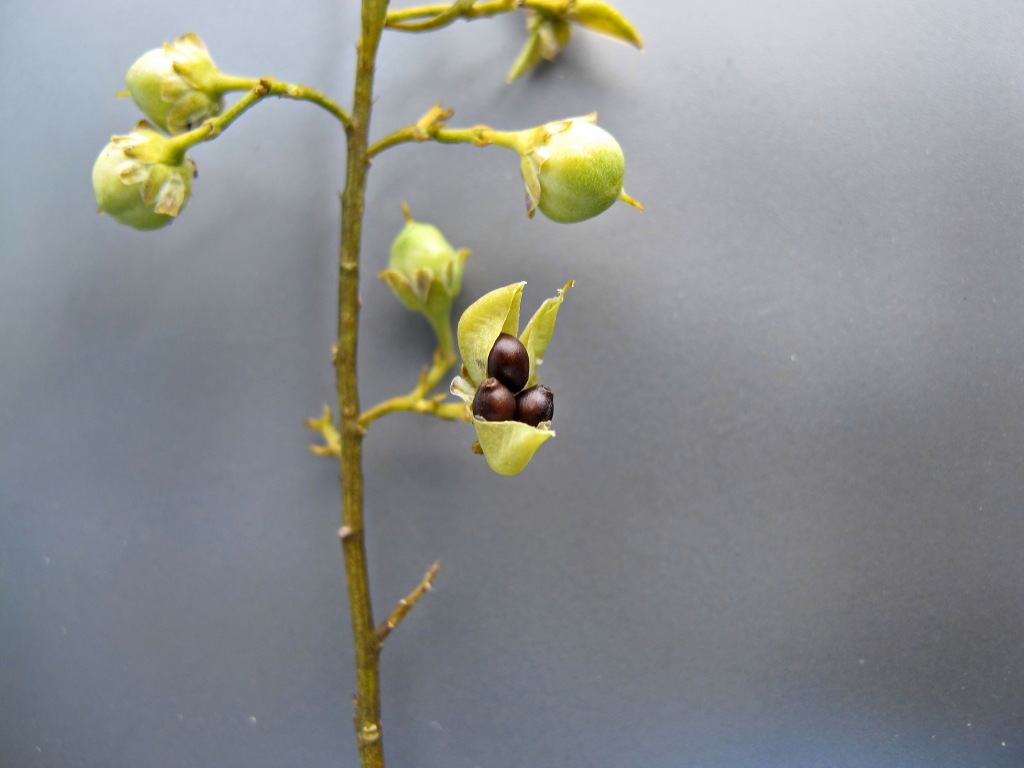Pigea floribunda
Lindl. Shrub VioletHerb or shrub, to 1.5 m tall, glabrous. Leaves linear, oblong or lanceolate, 0.5–3.5 cm long, with small incurved mucro; stipules linear, 0.5–1.5 mm long. Flowers solitary or in axillary racemes or cymes up to 2 cm long which do not or hardly exceed the leaves. Sepals oblong to elliptic, c. 1–4 mm long, blue, white or green; inner 2 petaloid and larger than outer 3; petals pale blue or mauve and cream, lower petal spathulate, 4–8 mm long, upper pair oblong, lateral petals broadly oblong. Capsule 4–8 cm long; seeds smooth or reticulate, pale brown or black. Flowers usually Jul.–Sep.
LoM, MuM, Wim, GleP, VRiv, RobP, MuF, Gold, CVU, GGr, DunT, EGL. Also WA, SA, NSW. Widespread throughout western Victoria in a range of habitats, but commonest in mallee scrub and dry woodland and most abundant following fires.
When treated as Hybanthus floribundus, 4 subspecies were recognised with only subsp. floribundus present in Victoria. The 3 other subspecies (all Western Australian) were elevated to species rank in their transferral to Pigea.(Forster 2021).
Entwisle, T.J. (1996). Hybanthus. In: Walsh, N.G.; Entwisle, T.J., Flora of Victoria Vol. 3, Dicotyledons Winteraceae to Myrtaceae, pp. 367–369. Inkata Press, Melbourne.
 Spinning
SpinningForster, P.I F. (2021). Reinstatement of Pigea Ging., an earlier generic name for the spade flowers previously included in Afrohybanthus Flicker (Violaceae). Austrobaileya 11: 31.

